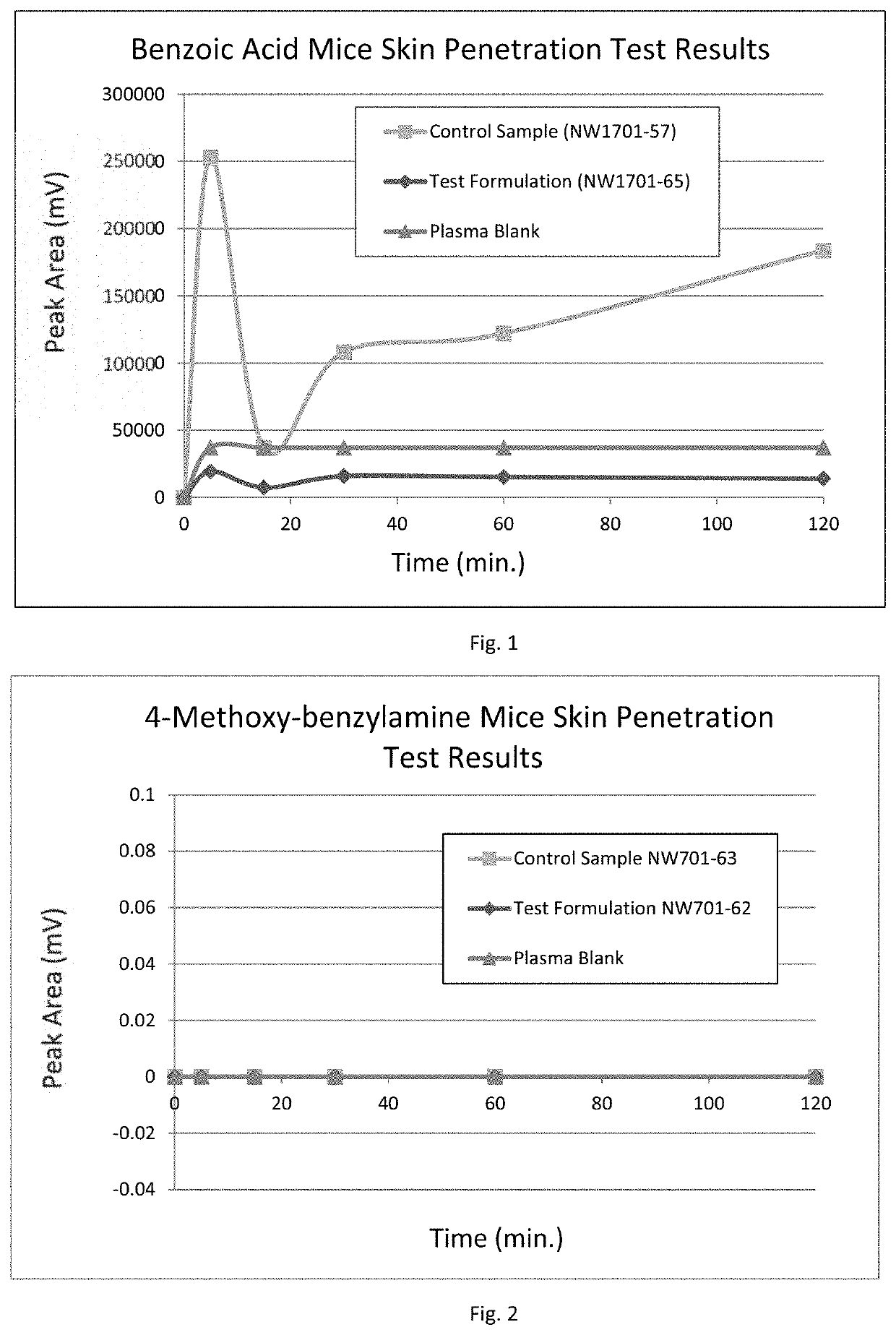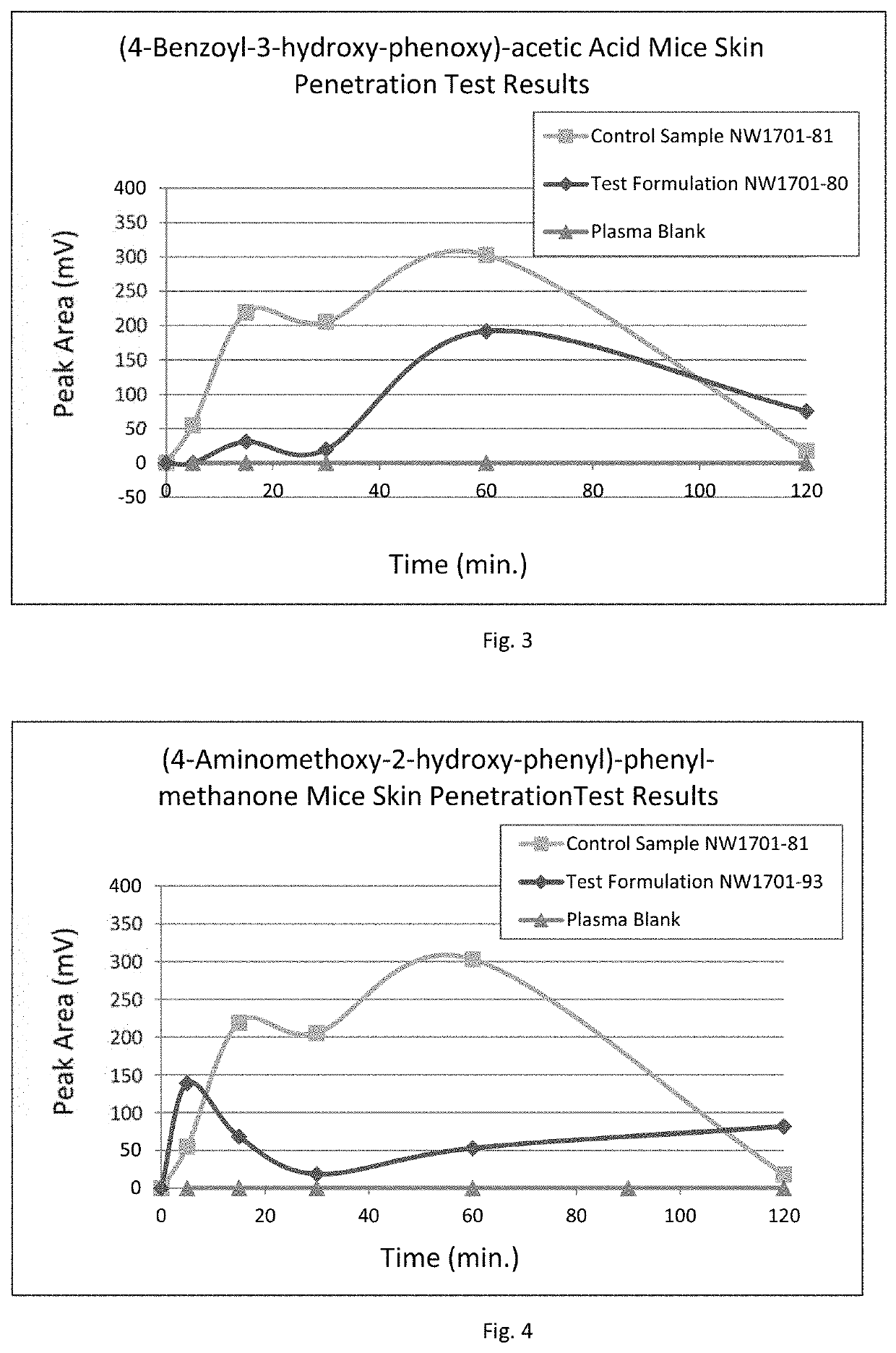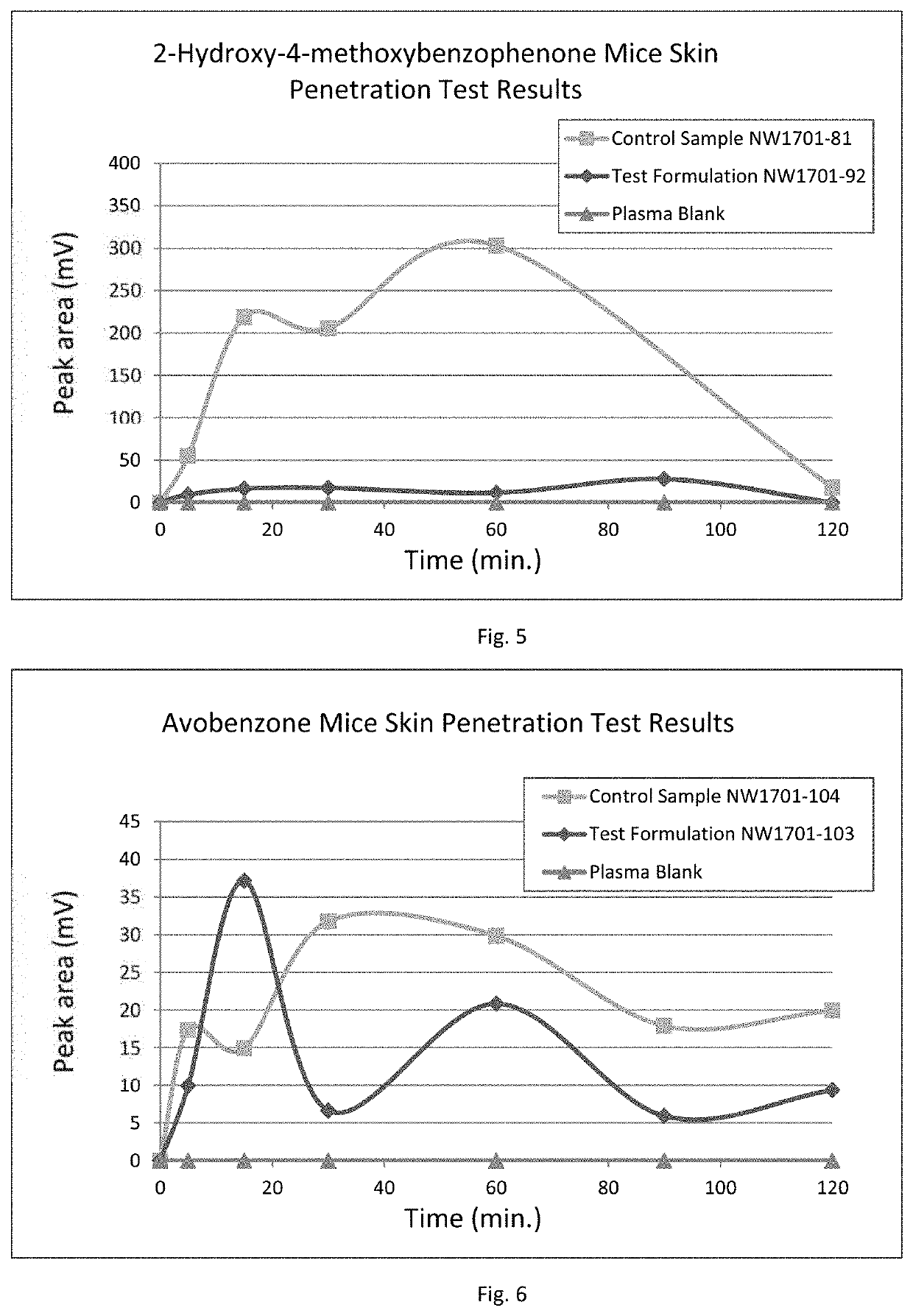A sunscreen formulation
a sunscreen and formulation technology, applied in the field of sunscreen formulations, can solve the problems of low level of uv filter in human samples, limited scope and frequency of sunscreen use among human population, and potential prenatal exposure and developmental toxicity of uv filter, so as to reduce or minimize or eliminate the skin penetration of sunscreen agents and improve the bio-safety of sunscreen products
- Summary
- Abstract
- Description
- Claims
- Application Information
AI Technical Summary
Benefits of technology
Problems solved by technology
Method used
Image
Examples
example 1
Synthesis of Sunscreen Agent (4-Benzoyl-3-hydroxy-phenoxy)-acetic acid
Synthesis scheme of (4-Benzoyl-3-hydroxy-phenoxy)-acetic acid
[0048]
Synthesis of Intermediate 3
[0049]
MaterialMolar MassStarting materialEquivalent1110.1110 g / 0.09 mol1.02140.5712.77 g / 0.09 mol1.0AlCl3133.3414.53 g / 0.11 mol1.2Chlorobenzene75 ml
[0050]To a nitrogen-filled three-necked-flask 1,3-dihydroxy-benzene (10 g, 0.09 mol) and chlorobenzene (75 mL) were charged. Aluminum chloride (14.53 g, 0.11 mol) was added while stirring. Benzyl chloride was added to the above mixture drop wisely. After completing the addition, the temperature of the content was raised to 90° C. while stirring. The agitation was stopped when the compound 1,3-dihydroxy-benzene was used up with TLC (PE:EA=2:1)
[0051]When the temperature dropped to 50° C., dichloromethane (500 mL) and 1N sodium hydroxide (200 mL) were added. The mixture was stirred for 5 min. After settling, separate organic phase from aqueous phase. To the aqueous phase was adde...
example 2
Synthesis of Sunscreen Agent (4-Aminomethoxy-2-hydroxy-phenyl)-phenyl-methanone
Synthesis scheme of (4-Aminomethoxy-2-hydroxy-phenyl)-phenyl-methanone
[0056]
Synthesis of Intermediate 3
[0057]
MaterialMolar MassStarting materialEquivalent1,3-dihydroxy-benzene110.1110 g / 0.09 mol1.0Benzyl chloride140.57 2.77 g / 0.09 mol1.0AlCl3133.3414.53 g / 0.11 mol1.2Chlorobenzene75 ml
[0058]To a nitrogen-filled three-necked-flask 1,3-dihydroxy-benzene (10 g, 0.09 mol) and chlorobenzene (75 mL) were charged. Aluminum chloride (14.53 g, 0.11 mol) was added while stirring. Benzyl chloride was added to the above mixture drop wisely. After completing the addition, the temperature of the content was raised to 90° C. while stirring. The agitation was stopped when the compound 1,3-dihydroxy-benzene was used up monitored with TLC (PE:EA=2:1)
[0059]When the temperature was dropped to 50° C., dichloromethane (500 mL) and 1N sodium hydroxide (200 mL) were added. The mixture was stirred for 5 min. After settling, separa...
example 3
Benzoic Acid Formulation
Benzoic Acid Formulation Composition
[0064]
Benzoic AcidChitosanGlycerolWater260.84 mg0.51 g1.09 g15.39 g
[0065]Add benzoic acid, chitosan polymer, and water to a beaker. Stir for 2 hours a solution was obtained. Add glycerol 1.09 g and mix thoroughly. Evaporate water at ambient temperature until reaching equilibrium. A transparent ointment (7.21 g) was obtained. Benzoic acid content is 3.6%.
[0066]Formulation Chemistry
[0067]Chitosan polymer contains —NH2 amine groups. The N % is 8.695%. When mixed with benzoic acid, —NH2 amine groups will react with benzoic acid to form benzoic anion and ammonium cation. Due to the ionic interaction between the chitosan and benzoic acid and the bulkiness of chitosan polymer the skin penetration of benzoic acid will be either dramatically reduced or eliminated.
[0068]Benzoic Acid Control Formulation
[0069]For the purpose of comparison, a benzoic acid control formulation was prepared. Lack of the above-mentioned ionic interaction be...
PUM
| Property | Measurement | Unit |
|---|---|---|
| temperature | aaaaa | aaaaa |
| wavelength | aaaaa | aaaaa |
| wavelength | aaaaa | aaaaa |
Abstract
Description
Claims
Application Information
 Login to View More
Login to View More - R&D Engineer
- R&D Manager
- IP Professional
- Industry Leading Data Capabilities
- Powerful AI technology
- Patent DNA Extraction
Browse by: Latest US Patents, China's latest patents, Technical Efficacy Thesaurus, Application Domain, Technology Topic, Popular Technical Reports.
© 2024 PatSnap. All rights reserved.Legal|Privacy policy|Modern Slavery Act Transparency Statement|Sitemap|About US| Contact US: help@patsnap.com










